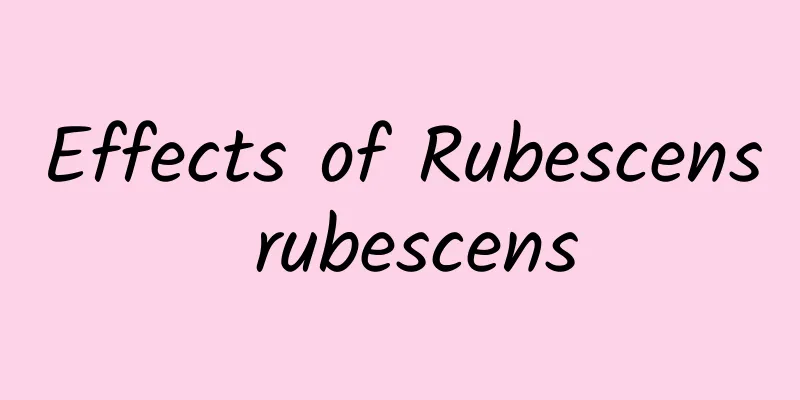The role and efficacy of Magnolia officinalis

|
Diseases are very common in life. Different diseases require different treatments, so the choice of medicines is also different. When choosing medicines, it is also necessary to understand all aspects of the medicine, so that it will be of great help to the treatment of the disease and prevent the disease from continuing to develop. Magnolia officinalis is a very good herb that is very helpful for the treatment of diseases. What are the functions and effects of Magnolia officinalis? There are many aspects to the effects and functions of Magnolia officinalis. When choosing it, you also need to be careful and not use it casually, especially when you don’t understand it. Using it indiscriminately to treat diseases will cause some damage to various aspects of human health. The role and efficacy of Magnolia officinalis: Effects of Magnolia Bark: Magnolia officinalis is the bark, root bark and branch bark of the Magnoliaceae plants Magnolia officinalis and Lushan Magnolia officinalis. Magnolia officinalis is also known as thick bark, heavy bark, red bark, fierce bark, Sichuan bark and purple oil magnolia officinalis. Magnolia officinalis has the effects of promoting qi and eliminating accumulation, drying dampness and eliminating fullness, relieving adverse effects and relieving asthma. Magnolia officinalis has the effects of treating food accumulation and qi stagnation, abdominal distension and constipation, dampness blocking the middle burner, epigastric distension, vomiting and diarrhea, chest fullness, asthma and cough. People with qi deficiency and fluid deficiency and pregnant women should use Magnolia officinalis with caution, and dried ginger is its adjuvant. Magnolia officinalis is incompatible with Alisma orientalis, Hanshuishi and Xiaoshi. Drug name: Magnolia officinalis Alias: thick skin, heavy skin, red bark, fierce bark, Sichuan bark, purple oil magnolia bark. The role of Magnolia officinalis Family classification: Magnoliaceae Nature and flavor: bitter, pungent, warm. Meridians: spleen, stomach, lung and large intestine meridians. Efficacy: Promotes qi circulation and eliminates stagnation; dries out dampness and relieves fullness; reduces adverse reactions and relieves asthma. Indications: food stagnation and qi stagnation; abdominal distension and constipation; dampness blocking the middle jiao, abdominal distension, vomiting and diarrhea; phlegm congestion and qi reversal; chest fullness, wheezing and coughing Dosage and Administration: For oral administration: decoct in water, 3-10 g; or make into pills or powder. Source: Magnolia officinalis is the bark, root bark and branch bark of Magnolia officinalis and Magnolia officinalis of the Magnoliaceae family. Preparation: Magnolia officinalis: Soak in water, remove from the skin, wash, cut into strips and dry. Ginger Magnolia Bark: Take ginger slices and boil them into soup, add clean Magnolia Bark, and cook together with the ginger soup. When the soup is absorbed, take out, slice it in time, and dry it. (For every 100 catties of Magnolia officinalis, use 10 catties of ginger) "Leigong Paozhi Lun": When using Magnolia officinalis, it is better to use the purple one with a spicy taste, or make it into pills or powder, remove the rough skin, and roast it with butter. For every pound of meat, use 4 liang of butter, roast it and grind it into small pieces before use; if used in soup, roast it with 8 liang of natural ginger juice, and use one liter as the dosage. The role of Magnolia officinalis: 1. Magnolia officinalis is used to treat abdominal distension, pain and constipation: 8 liang of Magnolia officinalis, 4 liang of Rhubarb, and 5 pieces of Citrus aurantium. Take the above three ingredients, add 1 dou 2 liters of water, boil the first two ingredients and take out 5 liters, then boil the rhubarb and take out 3 liters. Take one liter of the medicine warm, until it works. (Houpu Sanwu Decoction from Synopsis of the Golden Chamber) 2. Magnolia officinalis is used to treat excessive thinking that causes turbid stool and spermatorrhea: Magnolia officinalis (peeled and ground into powder) 100g Sheep shank charcoal (calcined and then red-scented) 50g. Grind each into powder. For those with severe coldness, add 25g of refined cinnabar and boil it in water to make balls as big as sycamore seeds. Take 100 to 200 balls each time on an empty stomach with rice water. (Baoqing Materia Medica Compromise quoted from Liu Xinfu's Secret Pill) 3. Magnolia officinalis is used to treat long-term bloating and stuffiness in the heart, inability to eat and drink, due to improper diet and the conflict between cold and heat, which causes bloating in the heart and abdomen: roast the Magnolia officinalis on fire until dry, then dip it in ginger juice and roast it until it is charred, then pound and sieve it into flour. Take two spoonfuls of the medicine with old rice drink, three times a day. It also treats nausea and stops diarrhea. ( Dou Men Fang ) 4. Magnolia officinalis is especially effective in treating diarrhea caused by deficiency of the stomach, especially in the elderly: 1.5g of Aconitum (fried), 0.5g each of Magnolia officinalis (fried with ginger), Licorice (fried), and Dried Ginger (fried). Take 5g each time, boil 3 he of water, 2 slices of ginger until 2 he is left, and drink while hot. Take two doses at a time. (Jianpi Powder from Su Chen Liang Fang) 5. Magnolia officinalis is used to treat disharmony of spleen and stomach qi and loss of appetite: 2.5 liang of Magnolia officinalis (peel off the rough skin, apply ginger juice, and roast until fragrant and clean), 1.5 liang of licorice (roast), 4 liang of Atractylodes (soak in rice water for two days and scrape off the skin), 2.5 liang of dried tangerine peel (remove the white part), grind the above four ingredients into powder. Take one coin of it each time, add one cup of water, add ginger and dates and boil for seven minutes, remove the residue and drink it while warm on an empty stomach. Or grind it into fine powder, add honey and make into pills as big as sycamore seeds. Take ten pills each time, chew them with salt water, and drink on an empty stomach. (Pingwei Powder from Boji Fang) 6. Magnolia officinalis for cough with floating pulse: Magnolia officinalis 5 liang (15 grams), Ephedra 4 liang (12 grams), Gypsum as big as an egg (12 grams), Apricot kernel half a liter (9 grams), Pinellia tuber half a liter (9 grams), Dry ginger 2 liang (6 grams), Asarum 6 grams, Raw wheat one liter (20 grams), Schisandra chinensis half a liter (5 grams). Boil the above nine ingredients with one dou and two liters of water, first boil the wheat until cooked, then add the other ingredients and boil until three liters are left, take one liter three times a day while warm. (Magnolia officinalis and Ephedra decoction in "Golden Chamber") 7. Magnolia officinalis is used to treat the qi caused by joy, anger, sadness, worry, fear, and shock, and the stagnation of phlegm, which looks like broken cotton or plum pits in the throat and cannot be coughed out or swallowed, or fullness in the middle of the abdomen, uncomfortable qi, or excessive phlegm, shortness of breath, or vomiting and nausea due to phlegm and fluid in the middle of the body: 2 liang of Perilla leaves, 3 liang of Magnolia officinalis, 4 liang of Poria cocos, and 5 liang of Pinellia. Chop finely. Take 4 qian each time, add 1/2 cup of water, 7 slices of ginger, 1 jujube, boil until 60% done, remove the residue, and take it hot at any time. (The 47 Decoction in Yijian Fang is the Banxia Houpu Decoction in Jinkui Yaolue) 8. Magnolia officinalis is used to treat long-term dysentery caused by water retention: 3 liang of Magnolia officinalis and 3 liang of Coptis chinensis. Grind it, add three liters of water and boil it until one liter remains. Take it with a hollow heart. ("Meishi Ji Yan Fang") 9. Magnolia officinalis treats diarrhea caused by cold: take equal parts of dried ginger and Magnolia officinalis. Grind the above ingredients into powder and make into pills the size of walnuts with honey. Take 30 pills at any time. (Bao's Prescriptions for Children) 10. Magnolia officinalis is used to treat worm accumulation: 2 qian each of Magnolia officinalis and Areca catechu, and 2 black plums. Decoction in water. ( The Complete Book of Baochi ) Magnolia officinalis is used to treat the stagnation of the seven emotions, obstruction of phlegm and qi, and the plum pit qi syndrome caused by an obstruction in the throat that cannot be swallowed or spit out. Magnolia officinalis can also be used to dry out dampness and eliminate phlegm, and to relieve qi and relieve fullness. Magnolia officinalis is used in combination with Pinellia ternata, Poria cocos, Perilla leaf, ginger and other drugs, such as Banxia Houpo Decoction (Golden Chamber Synopsis). Magnolia officinalis is used to treat dampness blocking the middle burner and abdominal distension: Magnolia officinalis is bitter, dry and pungent in nature, can dry out dampness, and also relieve gas and distension, making it an important medicine for eliminating distension. Magnolia officinalis is often used together with Atractylodes macrocephala and dried orange peel, such as Pingwei San (Hejijufang) Magnolia officinalis treats cough and asthma caused by phlegm and fluid: Magnolia officinalis can dry out dampness and eliminate phlegm, relieve gas and relieve asthma. If phlegm and fluid block the lungs, lung qi does not descend, and the patient suffers from cough, asthma, and chest tightness, Magnolia officinalis can be used together with Perilla seed, dried orange peel, and Pinellia ternata, such as Perilla seed Jiangqi Decoction (Hejijufang). If cold fluid turns into heat, causing chest tightness, shortness of breath, phlegm in the throat, and irritability, Magnolia officinalis can be used together with ephedra, gypsum, and apricot kernel, such as Houpu Mahuang Decoction (Golden Chamber Synopsis). If the patient has asthma and it is triggered by external wind and cold, Magnolia officinalis can be used together with cinnamon twig, apricot kernel, etc., such as cinnamon twig, Magnolia officinalis and apricot kernel soup (Treatise on Febrile Diseases). Magnolia bark is used to treat food stagnation, qi stagnation, abdominal distension and constipation: Magnolia bark can relieve gas, relieve fullness, eliminate food stagnation and relieve stagnation. Magnolia officinalis is often used together with rhubarb and immature bitter orange, such as Magnolia officinalis three-ingredient decoction (Golden Chamber Synopsis). If constipation is caused by heat accumulation, Magnolia officinalis is combined with Rhubarb, Glauber's Salt, and Citrus aurantium to achieve the effect of relieving heat accumulation, eliminating stagnation, and removing stagnation, which is Dachengqi Decoction (Treatise on Febrile Diseases). Magnolia officinalis and Atractylodes lancea are both dehumidifying drugs with pungent, bitter and warm properties, and the function of drying away dampness. They are often used together to treat symptoms of dampness blocking the middle burner. However, Magnolia officinalis is mainly bitter in taste, which can descend qi, eliminate accumulation and distension, and also descend qi, eliminate phlegm and relieve asthma. It can eliminate invisible dampness and visible fullness, and is an important medicine for eliminating distension. Atractylodes lancea is pungent, dispersing, warming and drying in nature, and is an important medicine for treating dampness blocking the middle burner, and can also eliminate rheumatism. Through the above introduction, we have a good understanding of the role and efficacy of Magnolia officinalis. There are many options for choosing it to treat diseases, and it is also very effective in improving human physique. However, such medicine cannot be used for a long time, otherwise it will cause some damage to various aspects of the human body. This should also be noted. |
>>: The efficacy and function of pollen
Recommend
What are the medicinal values of castor seeds?
Castor seeds are a kind of herb produced in the s...
The duck meat I bought was shiny? Was it because I was starving, or was it because the duck had become a spirit?
"A beautiful day is coming to an end. Tomorr...
Effects of Ginsenosides
Medicine is very common in our daily life. Differ...
What are the benefits of drinking purslane boiled water?
In real life, Purslane is a very common plant, an...
Is baby cabbage the baby of Chinese cabbage? Then whose “baby” is baby cabbage?
How to distinguish Chinese cabbage, Chinese cabba...
Deserts are not controlled, but protected? | World Day to Combat Desertification and Drought
In recent years, my country has made considerable...
Does eating chicken regularly really lead to early puberty? The "culprit" has finally been found
Expert of this article: Huang Yao, Master of Pedi...
Tea Science | From "Six Drinks" to "Tea Drinks", how did tea culture change during the Wei and Jin Dynasties? (Part 1)
Lu Yu's "The Classic of Tea - Seven Thin...
Across thousands of years, let's see how the ancients "played" sports competitions
Ancient Chinese polo game. Image courtesy of Visu...
He studies large models at Westlake University, hoping to make AI understand human happiness and sadness
There are two iceberg model pictures of conversat...
Which Chinese medicines cannot be taken together?
Chinese medicine is not taken alone. Each patch o...
Traditional Chinese medicine for promoting blood circulation and dispersing blood stasis
In our lives, many people need to take some Chine...
From the immortal "Hydra" to the centenarian "strange shark" in the deep sea, these "immortal" legends are amazing!
Author: Duan Yuechu and Huang Yanhong In the worl...
Taboos of morning glory
The Chinese medicinal herb morning glory seed, al...
The sweetness is too high! It turns out that a "straight man" confession can be sweet beyond measure~~
Who says romance is only about sweet words and co...









